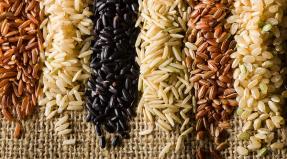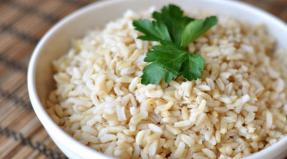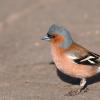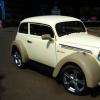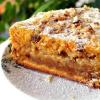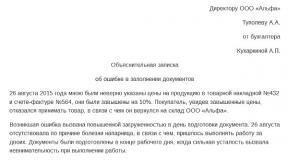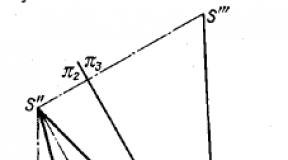Finch in spring. Common finch - what it looks like, features of a bird. Habitat of the common finch
The finch (in Latin Fringílla coélebs) is a songbird from the finch family.
The chaffinch is comparable in size to a sparrow, its body length is about 14.6 cm. The wingspan reaches 24.6-28.4, and the weight of the bird is only 16-40 g. Under natural conditions, the chaffinch is not difficult to spot. The bird has a bright color, especially in spring, in the male - the breast and goiter are red-brown, brownish-greenish back, grayish-blue head and significant white markings on the wings. The female has a less juicy set of colors. In the wild, finches live only 2 years, while in captivity their life cycle reaches 12 years.
Where does it live?

The species lives in Europe, Western Asia and in the expanses of North Africa. Finches are numerous birds that live in our camp. They settle mainly in forests, but they can also be seen in gardens, in city parks, not far from human dwellings. Europe is home to 78-93 million couples. The bird settles in coniferous, deciduous forests, in plantations planted by man. Prefers rare old and cool landscapes. It is observed in deciduous subalpine plantations, kitchen gardens, orchards, city parks and rural areas.
What does it eat and where does it winter?

It eats green particles of plants and seeds, in the summer the food is supplemented with harmful insects and other invertebrates rich in protein, which feeds the chicks.
The chaffinch hibernates: some in Central Europe, others tend to the south (mainly the Mediterranean). In addition, it winters in Ciscaucasia: in the mountains and foothill forests.
How does a finch reproduce?

Birds start nesting from the beginning of May. Incubation plus feeding period - two weeks. Young chicks leave the nest - in June. Finches often have time to lay two clutches per season. The second time - June-August. Birds are often polygamous and can fertilize several females at once. The clutch contains 4-8 eggs, pale bluish-greenish in color.
How did the name of the bird come about?

In fact, a finch is not a finch at all. The bird is not afraid of the cold and returns in early spring when the snow lies. Leaves nesting sites also in late autumn, in the "chilly" cold time. Most likely, due to the fact that the bird flies and flies in the cold season, it was called the finch.
If you listen to the singing of a finch, it can be mistaken for the song of a nightingale. But if you listen, you will notice the absence of characteristic overflows. The song of the finch is demonstrated by a trill, which is preceded by whistling thin sounds, the singing composition ends with a “stroke” (on a short sharp note).
Finch- one of the most common forest birds in Europe. This is a rather unpretentious creature to the habitat, which can be found not only in forests. City parks and gardens are the same home for them.
Finch Features and Habitat
finch bird represents the finches family. By description of the finch- a small bird with about , sometimes reaches a length of up to 20 cm, and weighs only about 30 g. However, it differs significantly from other birds in that it has a very bright plumage.
Males, especially in the mating season, look very defiant. Their neck and head are blue or dark blue. The breast, cheeks and throat are dark red or burgundy in color, the forehead and tail are black.
Two stripes of a bright shade located on each wing, and a green tail make the owner's appearance unforgettable. After molting in autumn, the color scheme of the bird's plumage becomes much more faded and brown tones begin to predominate.

The female finch has a more muted color, gray-green shades predominate in her color. Chicks - teenagers are more in color than females. There are a lot of subspecies of finches, they differ among themselves in size, beak, color and other features. In some areas, they occupy a leading place in terms of number among other small birds.
Finches are considered migratory birds, although some representatives adapt and stay for the winter, in the chosen territory. The European part of Russia, Siberia, the Caucasus is their summer place of residence.
In September, October, birds gather in groups of about 50 to 100 individuals and go to winter in Central Europe, North Africa, Asia Minor, Kazakhstan and Crimea.

Pictured is a female finch
hibernate finch maybe in neighboring, located to the south, regions. Birds fly to the South quickly, about 55 km / h. Along the way, the flock may stop in food-rich regions for several days.
With firm certainty, it can be argued that, depending on the region, finches are sedentary, nomadic and migratory birds. In winter, finches form flocks and live mainly in open areas. As a rule, these are meadows and fields. Finches and sparrows are often members of their flock.
When the finches arrive spring is just beginning and they can be observed in forests, groves, forest plantations and city parks. Favorite habitats are sparse spruce forests, mixed forests and light forests. In more often they do not nest, as they usually look for food on the surface of the earth. Mostly they fly to the places where they were last summer.

The origin of the name of the bird is from the word to freeze, to chill. After all, they arrive at the very beginning of spring and fly away at the beginning of cold weather. There is one old Russian sign that if you hear the song of a finch, it means frost and cold, but it means warmth. It is noteworthy that the Latin name of the feathered has one root with the word cold. Even our ancestors believed that the finch was the herald of spring.
The nature and lifestyle of the finch
common finch flies very fast, and on the surface of the earth prefers not to walk, but to jump. finch songs voiced, loud and highly variable individually, very similar to the trills of a lark, but have their own characteristics.
The duration of the melody is no more than three seconds, after a short pause it is repeated. Youngsters perform simpler melodies, learn from adults and acquire skill and virtuosity with age.

By the way, each region is characterized by an individual "dialect", finch sounds, vary depending on where you live. The feathered repertoire can include up to 10 songs, which she performs in turn.
Before the rain, the birds sing a kind of trill "ryu-ryu-ryu", so that these birds can predict the weather. If the finch sings finch voice can be heard from the moment of arrival until mid-summer. In the autumn period, finches sing less frequently and in a low voice. At home finch singing starts from January.
Now to hear finch voice, many seek to win it at home. However, this is not the best solution. The finch does not really like to sing in a cage, he is constantly nervous, trying to free himself, he may start having problems with his eyes and obesity. In addition, it is quite difficult to choose a diet for this bird.
Finch nutrition
The finch feeds on plant food or insects. The peculiarity of the sky of the bird, a strong beak and strong facial muscles make it easy to break both beetle shells and hard seeds.
Basic Diet: Weed seeds and cones, buds and leaves, flowers, berries and all sorts of insects. Despite the fact that agricultural workers complain that birds destroy the seeds of sown plants, about the chaffinch it is safe to say that it brings significant benefits to fields and forest plantations.

Reproduction and life span of the finch
From warm lands in spring, male and female finches arrive in separate flocks. Males arrive earlier and keep apart from future girlfriends. Then the males begin to sing loudly, these sounds resemble the chirping of chicks. These sounds lure females into their territory.
The mating season for finches begins in March. Before looking for a mate, males occupy nesting sites, which have their own boundaries and different areas.
Often, these are the places where they nested last year. From this territory, competitors of the same species are immediately expelled. Fights between first-year-olds and older males are especially frequent because of the outskirts of the territories of old people.

During the mating season, males chaffinch look like real bullies. They fuss a lot, fight among themselves and sing, often interrupting the song. At this moment, he pulls himself up and the feathers on his head are pressed.
A nearby female flies up to the male, sits down next to him, bends her legs, raises her wings and tail a little, throws her head up and begins to squeak softly “zi-zi-zi”. Such acquaintance can take place both on the ground and in the branches of trees.
A month later, the finches begin building their home. This business is assigned to the female, the care of the male is help. It has been estimated that when building a nest, the female descends to the ground at least 1,300 times in search of suitable materials. finch nest can be found on almost any tree and any height. Most often - about 4 m and in the forks of branches.

In a week, a unique architectural structure is obtained - a bowl with a diameter of up to one meter. It consists of thin twigs, moss, branches, grass and roots. All this is fastened with a web.
Its walls are thick and durable and can reach 25mm. The outer walls are: moss, lichen and birch bark. Inside the nest is lined with various feathers, down and wool are also used. The result is a house that is perfectly camouflaged and hardly noticeable.

Pictured is a finch chick
Clutch contains 3-6 eggs, greenish with red dots. While the female is incubating the chicks, the male brings her food and takes care of her. After about two weeks, babies are born with red skin and dark fluff on the back and head.
They are completely helpless and both parents lovingly feed them directly into their beaks, putting them in. During this period, it is absolutely impossible to disturb. If a person approaches the nest, children or eggs, adult birds may leave it.

In mid-June, the chicks fly out of the nest, but the parents help them for another half a month. The second brood of finches appears in mid-late summer. There are fewer eggs in the second clutch. finch lives not for long, although in captivity its lifespan can reach up to 12 years.
They die mainly due to carelessness, as food is often sought on the ground and can be trampled by people or caught by predators. Among the people, the finch feather is considered a symbol of family happiness and prosperity.
| Finch | |
| Male finch. Rtishchevo, Tretyak Grove |
|
| scientific classification | |
|---|---|
| Kingdom: |
Animals |
| Type of: |
chordates |
| Class: | |
| Squad: |
Passeriformes |
| Suborder |
song passerines |
| Family: |
finches |
| Genus: | |
| View: |
Finch |
| International scientific name | |
|
Fringilla coelebs Linnaeus, 1758 |
|
| View in taxonomic databases | |
Finch(lat. Fringilla coelebs) is a songbird of the finches family ( Fringillidae).
Description
A small bird - body length 150 mm, wing - 81-93 mm, tail - about 65 mm, beak - about 11 mm. The head and neck of an adult male are bluish-gray, the forehead is black, the back is brownish-chestnut with a grayish tint; loin greenish-yellowish, long tail feathers grayish; lesser and medium wing coverts are white, greater wing coverts are black with a white apex; flight feathers are brown with white edges of outer webs; tail feathers - brown, on two extreme feathers - along a large, obliquely located white spot; the bottom is pale wine-brown, brighter on the cheeks, throat and goiter; grayish on belly and undertail. The beak is not thick, conical, bluish in the mating season, brownish in winter, legs and iris are brown. In the third decade of August, the mating attire of males changes to winter: the head becomes brown, but the beak continues to remain blue.
Finches have a pronounced sexual dimorphism. The female is colored paler than the male; its plumage is brownish, with white stripes on the wings and extreme tail feathers.
Voice and singing
The song is a loud trill with a sharp "stroke" at the end: "fuit-fuit-la-la-wee-chiu-kick." It varies greatly individually and among birds of different localities. Calling cry - ringing kicking. A non-specialized alarm call sounds like "rum-rum".
When danger appears, the male, as a rule, begins to “rumble” first. The alarm usually ends with the same signal. The restless "shshkan" of the male and female is produced in more stressful situations. The “rumbling” call of the male, due to some misunderstanding, has long been associated with the approach of rain. Later it was shown that such a relationship does not exist. An erroneous idea of the biological meaning of the rumbling signal, apparently, arose due to a mistranslation of the German term "regenruf": root "regen" can equally be associated with the word "rain" and with the word "excitement". When suddenly frightened, the finch sometimes emits a high-frequency lingering whistle.
The period of nest building and oviposition is accompanied by intense singing of males and their lekking flights. They are made mainly by birds living in the sparse forest near the clearings or on the edges. Regular singing continues until the end of June - beginning of July. In July, only a few males sing, and by the middle of the month they also fall silent. The last individual songs can be heard at the end of July. The song of males is subject to rather strong individual variability. Modifications are most common at the beginning and end of the song. The voices of other bird species have an undoubted influence on the nature of the melody. One male may have several variations, but most often he uses one or two.
Spreading
area
Distributed in Europe, Western Asia and North Africa; settled in the East. One of the most numerous birds in Russia.
habitats
The chaffinch inhabits almost all forest biotopes, including young secondary forests older than 15 years. It is extremely typical for parks and gardens, where the population density of these birds is usually more than 1 pair per 1 ha. Numerous in holiday villages and even in cities (including Rtishchevo). It lives among tree plantations during the nesting period, and from the end of summer it moves to more open habitats.
Lifestyle

A female finch. Rtishchevo, Tretiak Grove
Migrations
In spring, finches arrive in late March - early April. Depending on the nature of spring, the time of arrival of advanced males varies within almost a month. Most of the local males arrive later - in the second half of April. Females appear 5-7 days later than males. Migratory flocks can be encountered as early as mid-May. Even within one year, the arrival of finches is greatly extended, and this circumstance is the main reason for the non-simultaneity of the initial timing of its reproduction.
During the period of post-nesting migrations, young birds behave differently: some remain in the birth area for quite a long time, while others fly tens of kilometers away in search of food places. Directed migrations in open habitats begin in late July - early August. In the second half of this month, the first wave of migratory flocks passes, which sometimes number 100-200 birds.
reproduction

Despite the early arrival, finches start breeding quite late. The period of nest building is extremely non-simultaneous. Some couples start collecting building material in the last ten days of April, but mass nest building goes on at the end of the first and second decades of May. The vagaries of the weather can delay construction for a long time. Some finches are forced to start building the nest again several times before the eggs appear in it. This happens when the nest is built of light material and placed on a tree with dark bark. Such nests are often taken apart by other birds. Nests of finches are especially often ruined at the beginning of the nesting life - during the construction period, when they are clearly visible. Finches usually start building new nests right away and usually in safer places. In the future, most nests are camouflaged so well that it can be difficult to detect them.
The tree species on which finches nest are extremely diverse. Most often, finches nest on spruce, birch, alder and pine. More than ⅔ of all known nests have been found on these four breeds. Oak, rowan, willow, linden, maple and other trees with dark bark are used less frequently. Spruce attracts finches for its protective properties. Most of the nests found on spruces were located at a low height on the paws of the lower branches of large trees or in the crowns of young fir trees near the trunk.
Despite the fact that individual finch nests are located at high altitudes (up to 17 m from the ground), the majority (about 70%) are located at a level of 1 to 4 m. About 5% of all nests were found at a height of up to 1 m, and above 4 m - about 25%. Several nests were located at a height of 30-40 cm.
The place for the nest device is chosen by females; they are building it. Males only occasionally help by bringing building material. The finch's nest is a skillful structure made of dry blades of grass, twigs and moss, which looks like a dense deep cup. A characteristic feature for the chaffinch is the incrustation of nests with light lichens or birch films in the case of their location on trees with light bark (birch, alder), this makes the nests almost invisible. All building material is firmly fastened with cobwebs, due to which the walls become more dense. Litter in the nest is made of feathers, wool (often elk hair), sometimes golden threads of cuckoo flax stalks. For birds nesting in parks and summer cottages, the use of artificial material - cotton wool, bandages, paper, etc. is extremely characteristic. Nest dimensions: diameter - 9-10.5 cm, height - 5-8 cm, tray diameter 5- 7 cm, tray depth 3-5 cm.
The first masonry very rarely begins on May 1-2. The predominant number of females starts laying eggs in the second and third decades of May. The majority of repeated, belated clutches occur at the end of May - June. The total period of oviposition is extended by almost 2 months. Most fresh clutches (80%) appear during May. Clutch of 4-7 pale bluish-green or reddish-green eggs with pinkish-purple spots. Egg sizes - 17.0-22.8 × 13.2-15.8 mm. In June, there is a sharp decline in sexual activity.
Finch chicks leave the nest at the age of 13-14 days. Due to the general length of the breeding season, their departure occurs throughout June - early July. After 10-12 days, the chicks become independent and begin to roam in different directions, adhering to forest biotopes for the first time.
Food
Finches feed in vegetable gardens and fields. During the nesting period, they are mainly insectivorous. They bring to their chicks mainly inactive invertebrates - spiders, sawfly larvae, butterfly caterpillars, mayflies, sometimes Diptera. When searching for food, they constantly switch from one mass species to another. Vegetable food is added to animal food. Its quantity increases during periods of rain and during late breeding periods. From plant foods, chicks receive spruce and pine seeds, sometimes oat grains, bearberry berries, shadberry seeds, pieces of young needles. For adult birds, plant foods are more typical in summer. In June, finches sometimes concentrate in forest nurseries, where they peck at the upper part of pine seedlings. In mid-July - early August, finches begin to visit home gardens, where they feed on shadberry berries for a long time, eating out seeds from them and discarding the pulp. In the stomachs of adult birds, seeds of coniferous trees, elderberry, violet, oxalis, medicinal primrose, polyseed mari, bird buckwheat were found. Later, finches switch to feeding on the seeds of dead nettle, quinoa and other weeds, which form the basis of their diet until late autumn, and sometimes even in winter.
Moult
The autumn molt in finches is strongly extended and in different individuals proceeds non-simultaneously - from the beginning of July to the first days of October. Some young finches linger in the area of birth until September and are included in migration only in the first half of September, when the second wave of migration occurs and the majority of local birds depart. At this time, finches fly in a wide front, flying in large numbers over fields and forests and stopping to rest in vegetable gardens and orchards among the villages. In late September and early October, the last wave of passage is observed, which sometimes continues until mid-October.
Limiting factors and status
The enemies of the finch in the nesting period are jays, crows, magpies, gray owls, sparrowhawks, squirrels, ermines. There are several cases of attacks on the nests of a finch by a large spotted woodpecker, which most often drags away small chicks.
Literature
- Dementiev G.P. Sparrows (Complete guide to birds of the USSR by S. A. Buturlin and G. P. Dementiev). - T. 4. - M., L.: KOIZ, 1937. - S. 81-82
- Malchevsky A. S., Pukinsky Yu. B. Birds of the Leningrad region and adjacent territories. - L .: From the Leningrad University, 1983. - S. 489-493
- Mikheev A.V. Bird's nest guide. Proc. allowance for students of biol. specialties ped. in-comrade. Ed. 3rd, revised. - M.: Enlightenment, 1975. - S. 160
- Felix I. Birds of gardens, parks and fields. - Prague: Artia, 1980. - 106
- Flint V. E. et al. Birds of European Russia. Field identifier. - M.: Union for the Protection of Birds of Russia; Algorithm, 2001. - S. 198
| Birds of the Rtishchevsky district | |||||||||||||||||||||||||||||||
|---|---|---|---|---|---|---|---|---|---|---|---|---|---|---|---|---|---|---|---|---|---|---|---|---|---|---|---|---|---|---|---|
| Detachments |
|
||||||||||||||||||||||||||||||
| storks | |||||||||||||||||||||||||||||||
| Passeriformes |
|
||||||||||||||||||||||||||||||
| Pigeons | |||||||||||||||||||||||||||||||
| Anseriformes |
|
||||||||||||||||||||||||||||||
| Woodpeckers |
|
||||||||||||||||||||||||||||||
| Cranes | |||||||||||||||||||||||||||||||
| cuckoo |
|
||||||||||||||||||||||||||||||
| Shellfish |
|
||||||||||||||||||||||||||||||
| Charadriiformes | |||||||||||||||||||||||||||||||
| owls | |||||||||||||||||||||||||||||||
| Falconiformes |
|
||||||||||||||||||||||||||||||
| Swift-shaped | |||||||||||||||||||||||||||||||
| Flora and fauna of the Rtishchevsky region | |||
|---|---|---|---|
| Flora of Rtishchevskiy district |
|
||
| Mushrooms of the Rtishchevsky district |
|
||
| Fauna of the Rtishchevskiy district |
| ||
The chaffinch can be seen and heard throughout almost all of Europe and much of Asia. It has a rather strange name, as if it is cold all the time. However, in fact, the finch is not afraid of frost. Bird report with video and photo

Detachment - passeriformes
Family - finches
Genus/Species - Fringilla coelebs. Finch
Basic data:
DIMENSIONS
Length: 14.5-16 cm.
Weight: 17-30
BREEDING
Puberty: from 1 year.
Nesting period: since March.
Carrying: 1-2 per season.
Number of eggs: 4-6.
Incubation: 11-13 days.
Feeding chicks: 12-15 days.
LIFESTYLE
Habits: finches (see photo of the bird), except for the mating season, keep in flocks.
Food: mostly seeds.
RELATED SPECIES
The finches family includes, for example, the chaffinch, which is found throughout Europe, and Tenerife, which lives in the Canaries.
The finch is a sweet songbird that can be seen in Central Europe throughout the year. In winter, most of the northern population of finches flies to southern Europe and Africa. In early spring, these birds return to their nesting sites.
FOOD

The finch is a predominantly herbivorous bird. Its food consists of only one quarter of animal food and three quarters of vegetable food, mainly from various seeds. Herbivory is a characteristic feature of all finches. With the help of a strong beak, an uneven palate and strong facial muscles, the finch copes even with very hard food. It equally easily breaks the shells of beetles and the shells of seeds. The finch menu includes seeds of weeds and conifers, green buds of leaves and flowers, wild berries and mountain ash.
LIFESTYLE

Immediately after arrival, brightly colored male chaffinch begin to search for a convenient nesting site. Later, the female joins the male. Finches prefer dense thickets, however, these birds are unpretentious to the place of residence, so they settle in any forests, avoiding, perhaps, remote places. The nesting area of the chaffinch is usually only 120 m 2 . In winter, finches stay in flocks and move to open spaces - meadows and fields. Often they create joint flocks with sparrows or other types of finches, mainly with their closest relative, the finches.
BREEDING

Nesting time for finches begins in March - April. Males, at this time, having returned from wintering, begin to look for a convenient site. They mark their territory with loud singing and attract females to it. Having accepted the invitation of the male, the female begins to look for a place suitable for building a nest. The finch's nest can be in a variety of places - in a dense bush, hedge or on a tree, usually near the trunk or in a fork in the branches. The nest is built by the female, and the male helps her by bringing building material. The finch's cup-shaped nest is carefully woven from moss, grass and thin twigs held together with cobwebs and hairs. Outside, the nest is covered with lichens, birch bark and lumps of plant fluff, so it is almost impossible to notice it against the background of tree bark. The female lays 4 to 6 bluish-green eggs and incubates them for 11-13 days.
Newborn finch chicks are covered with down. They are completely dependent on their parents. Parents feed the chicks together. They bring insects to babies and put them directly into the open beaks of the chicks.
SINGING FINCH
Finch chicks learn their song by imitating the singing of adult males. So they become performers of the "dialect" characteristic of a certain area. This song is very important for young males when they first mark the boundaries of their territory. The tune changes depending on where you live. The song of finches is sonorous, fervent, with a characteristic "stroke" at the end.
FINCH OBSERVATIONS
The finch is the most common bird in European forests. The male chaffinch is one of the most brightly colored birds in Europe. They are easily recognizable by their greyish-blue crown, tan chest, chestnut back and dark green tail base. Unlike males, female finches are not as colorful. Their body is covered with brown feathers, they have white stripes on the wings and tail.
- During the construction of the nest, the female chaffinch flies down for building material about 1300 times and returns with it to the nest. The nest is located at a height of 2-4 m from the ground.
- Finches belong to the finches family. Only three species of this family feed their chicks exclusively on insects, i.e. protein food.
CHARACTERISTIC FEATURES OF THE FINCH. HOW IT LOOKS. DESCRIPTION OF THE BIRD
Female: for about 18 days is busy building a cup-shaped nest and incubating eggs.
Male: protects the site when the female incubates the eggs. He chases away potential rivals.
Wings: the white stripe on the wings helps to distinguish the female finch from other finches.

- Habitat of the chaffinch
WHERE THE FINCH LIVES
Europe, Asia, North Africa, the island of Madera, the Azores and the Canary Islands - the finch lives in all these places. Finches from the northern and eastern regions of the range are migratory birds and winter in the south - in Central and Southern Europe and the Middle East.
PROTECTION AND PRESERVATION
Finches are numerous throughout Europe, so they are not in danger of extinction.
Listen to the singing of songbirds: FINCH. Video (00:15:04)
Voices of birds - Finch (Fringilla coelebs). Video (00:00:52)
Finch (lat. Fringilla coelebs) is a songbird of the finch family.
Size C (length about 17 cm). The color of the plumage of the male is bright (especially in spring): the head is bluish-gray, the back is brownish with green, the crop and breast are brownish-red, there are large white spots on the wings; the coloration of the female is duller. Distributed in Europe, Western Asia and North Africa; settled in the East. One of the most numerous birds in Russia. It lives in forests and parks of all types, often near human habitation. Nests build on trees, masking them with moss and lichens. Sometimes nests twice a summer. The clutch contains 3-6 bluish eggs with speckles. Feeds on seeds and green parts of plants, in summer also on insects and other invertebrates, with which it also feeds nestlings.
Usually the specific song of a chaffinch is represented by a trill, ending with a "stroke" (short sharp sound) at the end. Trills are preceded by initial, thinner whistling sounds. Therefore, the finch's song can be divided into three successive parts - the chant, the trill, the flourish. This song structure is typical for all adult males (the female chaffinch usually does not vocalize). The whole song usually lasts about 2-3 seconds, after a pause (7-10 seconds) the song repeats again. Young male chaffinch (first-year-olds) have a simplified species song (subsong) that is homogeneous in structure, in which the three described parts are not distinguished. A similar subsong throughout life may be present in female chaffinch. It is assumed that the development of a normal species song in males occurs under the influence of testosterone (sex hormone). The normal (complex, differentiated) structure of a species song is acquired by young males (after becoming on the wing) as a result of learning - copying the song of older males of their species, as well as "mutual learning" of males of the same age - roll call. Songs can be changed (song improvisation), and different variants (types) of a specific song are created, which are clearly distinguishable when viewed on a sonogram. The repertoire of one finch may include 1-6 (10) versions of the song, performed in turn. Usually, when singing in a group, males perform only 2-3 types of songs; an average of 20 types of species song can be found in a population. Similar vocal variability is observed in many species of passerines. Because of the sonorous song, finches are often kept in captivity.
- an interesting and beautiful bird of the detachment passeriformes (Passeriformes) families finches (Fringillidae). His singing is sometimes mistaken for everyone's favorite song of the nightingale, surprised at the absence of characteristic trills. Finches give the impression of fearless birds. However, this opinion is refuted by the owners and sellers of finches.
What does a finch look like?
common finch (Fringilla coelebs) is a slender bird the size of a sparrow. Its length is about 14 - 16 cm. Other species may have different sizes. For example, a mountain chaffinch is about 20 cm. The males of the common chaffinch look very elegant during the mating season. They have a bright bluish-gray head and neck, and on the chestnut back, the gray tint is almost invisible. To the portrait of a male finch, it is worth adding two bright stripes on each wing; burgundy throat, goiter, cheeks and lower body; greenish-yellow loin and black-brown tail. In autumn (after molting), the colors of the plumage fade, acquiring calmer ocher-brown tones. The female finch has a brownish-gray color, darker in the upper body and head. The outfit of the grown chicks is more reminiscent of the coloring of the female chaffinch.
Singing finch
Ornithologists describe the beautiful song of the finch in a language they understand only: “fu-fu-fu-la-la-la-di-di-di-wee-chiu”. They call it a loud rolling trill. The call sounds like “pink-pink”, “rrry”. This is part of the melody before the ringing perky trill. Each "verse" usually ends with short sharp notes, i.e. stroke. The chaffinch sings (“ryumi” or “kicks”) more readily at sunrise and during the day in sunny weather. In cloudy weather, the melodies are not so expressive. A frightened chaffinch may make "hut-hut", "si-si" or tyu-tyu.
By the end of July, the songs of finches are heard less and less. The birds sing not so loudly, not at all like before.
Where do they live, where do they fly and what do finches eat?
The chaffinch is known not only in our country, but also in many other European, Asian and American countries. This migratory (in the middle lane) bird is found in forests, forest-steppes, city squares, parks and yards planted with trees. She also sings in Moscow parks and forest parks, for example, in Timiryazevsky Park. Finches are absolutely devoid of caution, they often move on the ground in search of food and often find themselves "under the feet" of passers-by or in the claws of animals. The flight of the chaffinch is fast and undulating.
Finches nest in pairs, nursing from 4 to 7 chicks in cup nests. Nests are built on trees in the forks of branches or on branches (at a height of 2-18 m, more often up to 4 m). Both parents feed the chicks, bringing them insects. By mid-June, the first flight of chicks takes place in the middle lane, finches are preparing for the second clutch in July.
Adult birds feed not only on insects, but also with pleasure find recently sown seeds, causing displeasure of people. Finches also eat seeds of weeds, small bugs, especially weevils, caterpillars. Rarely ants and bedbugs.
In the middle lane, the common finch flies to warm countries for the winter. It remains to winter in the same place rarely, sometimes it wanders in the direction of neighboring, warmer regions. Individual finches (from the southern regions of Russia) have adapted to roam, and sometimes stay for the winter in the places where they lived in the summer. Flocks of 40 - 50 birds fly away from September to the end of October. Mainly in Southern Europe. Often the bird spends the winter in the Mediterranean and the Caucasus. It flies fast, the flight speed is up to 55 km per hour. In the spring (from the end of March - in April), finches reappear in our area.
Finches live a short time. They often die due to their carelessness. Especially during singing, when the finch throws its head back and completely forgets about all the dangers. He is saved only by the fact that the bird sings its songs more often, being on a tree branch.
Here is how A.N. Formozov in the book "Six Days in the Woods":
Male finches occupied every corner of the forest and now thundered their sonorous trills towards the rising sun. One of them - clean, slender with wide white bandages on the wings - sang, jumping along the road, looking for food and did not want to fly off when the boys appeared. When they did frighten him away, another finch, the owner of this corner of the spruce forest, rushed at the fluttering bird, which had landed about ten paces from the road. The host finch and the trespassing finch started such a fight that they curled up into a fluffy ball with two outstretched tails and four wings. In this form, they fell to the ground with a squeak from the branch where the first skirmish took place. "What, horrible!" Grisha laughed, watching the plucked chaffinch hurried guiltily to his plot. He was accompanied by a fervent song of the winner, who drove the newcomer from where he himself intended to nest and where he was waiting for the female (male finches arrive a few days earlier than females).

Finch in a cage
Finches are sold to live in a cage and sing beautifully. However, it is not the most suitable bird for captivity. Here is what Konrad Z. Lorenz, an excellent expert on bird behavior, wrote about this:
One of the most debilitating tortures you can endure in your room is the constant fluttering of the wings of a caged bird. You have acquired a finch - he is pretty and sings beautifully. Since you want not only to hear the singing, but also to see the singer himself, then, without hesitation, you remove the linen coverlet with which the previous owner, an experienced finch connoisseur, thoughtfully draped the cage. The bird takes the change for granted and sings as before, but only as long as you don't move. You will be able to dare only the slowest and most careful movements, otherwise, the distraught bird frantically throws its body on the bars of the cage, so that you begin to fear for its head and plumage. At first, you think that the captive will get used to it and become tame, but here you are deeply mistaken. So far, I have seen only a few finches that are accustomed to a person walking nonchalantly near the cage itself.
There is another important "detail" that Konrad Z. Lorenz warns about. It is the nocturnal restlessness of caged birds. It coincides with the period of migration of migratory birds. The finch can be saved if a tiny electric light is on at night, the dim light of which allows him to see the twigs and the perch.
The bird storms the bars of its prison not because it wants to fly somewhere. She just wakes up, can't sleep, and starts flipping around the perches. She sees nothing in the dark, so again and again she blindly stumbles upon the walls of the cage.
And one more note from this knowledgeable person:
The songs of our various warblers and most of the finches do not sound too loud in the room - perhaps with the exception of the chaffinch, which can annoy you with the constant repetition of its ringing trill.
Currently, finches are rarely kept in a cage. Previously, this vociferous bird was often found in captivity, although it was very expensive. Surprisingly, in captivity, finches live much longer than in nature. Despite the fact that they often suffer from obesity, eye diseases and blindness. As a rule, these birds are kept one at a time in a cage, curtained off so that the finch does not injure itself, being frightened of a person. There are many problems with the diet. Listening to a bird, but not seeing it, is not to the liking of all songbird lovers. Most likely, this is the main reason why finches cease to be vociferous recluses.
© Site, 2012-2019. Copying texts and photos from the site podmoskоvje.com is prohibited. All rights reserved.
(function(w, d, n, s, t) ( w[n] = w[n] || ; w[n].push(function() ( Ya.Context.AdvManager.render(( blockId: "R-A -143469-1", renderTo: "yandex_rtb_R-A-143469-1", async: true )); )); t = d.getElementsByTagName("script"); s = d.createElement("script"); s .type = "text/javascript"; s.src = "//an.yandex.ru/system/context.js"; s.async = true; t.parentNode.insertBefore(s, t); ))(this , this.document, "yandexContextAsyncCallbacks");
